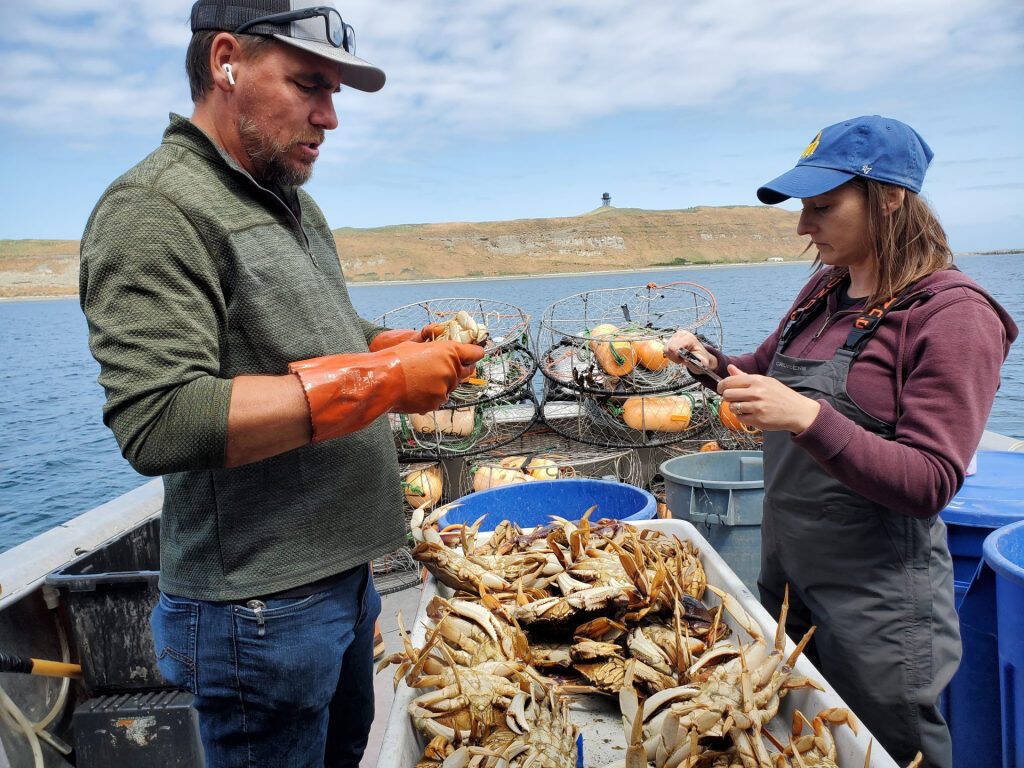BLYN — The Jamestown S’Klallam Tribe is working with a diverse group of partners to learn more about the population structure of Puget Sound’s Dungeness crab by studying the DNA of both larvae and adults.
“The main question our team is looking to answer is whether Dungeness crab in the region belong to a single large population or are there multiple genetically distinct populations?” said Liz Tobin, the tribe’s shellfish program manager.
Biologists have been working with tribal and non-tribal commercial crab fishermen to collect genetic material from crab larvae and adults from 11 management areas throughout Puget Sound this year.
After genetic analysis is completed by Jay Dimond, a research assistant professor at Western Washington University, tribal and state co-managers and members of the shellfish industry will evaluate the results to determine if the population’s genetics vary throughout the region and how that aligns with the current Dungeness crab management regions and boundaries.
“Genetic diversity is a species’ best defense against environmental change, so our goal with this research is to provide fishery managers with the information needed to maintain this diversity,” Dimond said.
“Genetic data can also provide us with information about where crab larvae are coming from and where they are going. Some populations may be self-seeding, while others may be seeded by larvae from distant sources.”
This work also can help scientists understand fluctuations or declines in crab populations that may be explained by natural factors such as larval supply, he said.
In the end, the goal is to maximize harvest opportunities while ensuring the long-term sustainability of the resource.
The tribes and state have been conducting surveys and test fisheries to get an idea of how much crab is out there and observe seasonal molting patterns.
A region-wide light trap project since 2018 also has helped scientists track when and where crab larvae are present across the inland waters of Washington and British Columbia.
So far, more larvae have been found in North Sound and the Strait of Juan de Fuca, while fewer crab have been showing up in South Sound and Hood Canal.
“This project is a great demonstration of multi-partner collaboration across the region,” said Emily Buckner, program coordinator for the Pacific Northwest Crab Research Group (PCRG).
“Between the project leads, technical reviewers and data collectors, 19 unique partners have contributed to this effort via the coordination of the crab research group.”
Funded by a National Oceanic and Atmospheric Administration Saltonstall-Kennedy grant, the principal researchers on the project are Western Washington University, Jamestown S’Klallam Tribe, Puget Sound Restoration Fund/PCRG, Swinomish Indian Tribal Community and Washington Department of Fish and Wildlife.
Additional partners include other state departments and tribes, including the Port Gamble S’Klallam Tribe.
________
This story was originally featured in the Northwest Indian Fisheries Commission’s Northwest Treaty Tribes and was used by permission. See nwtreatytribes.org for more information.

